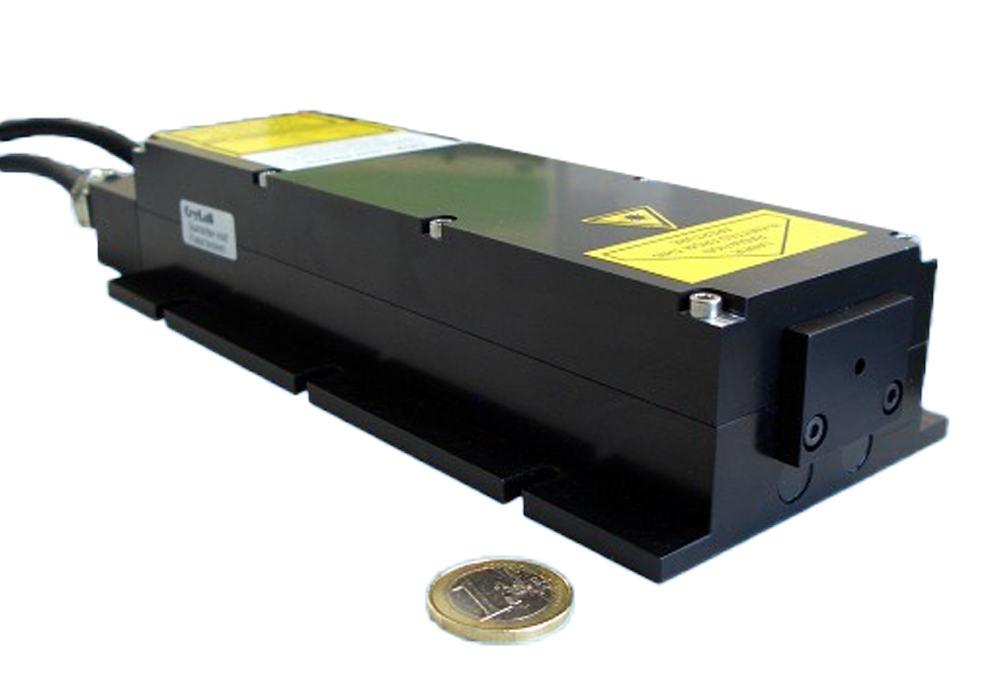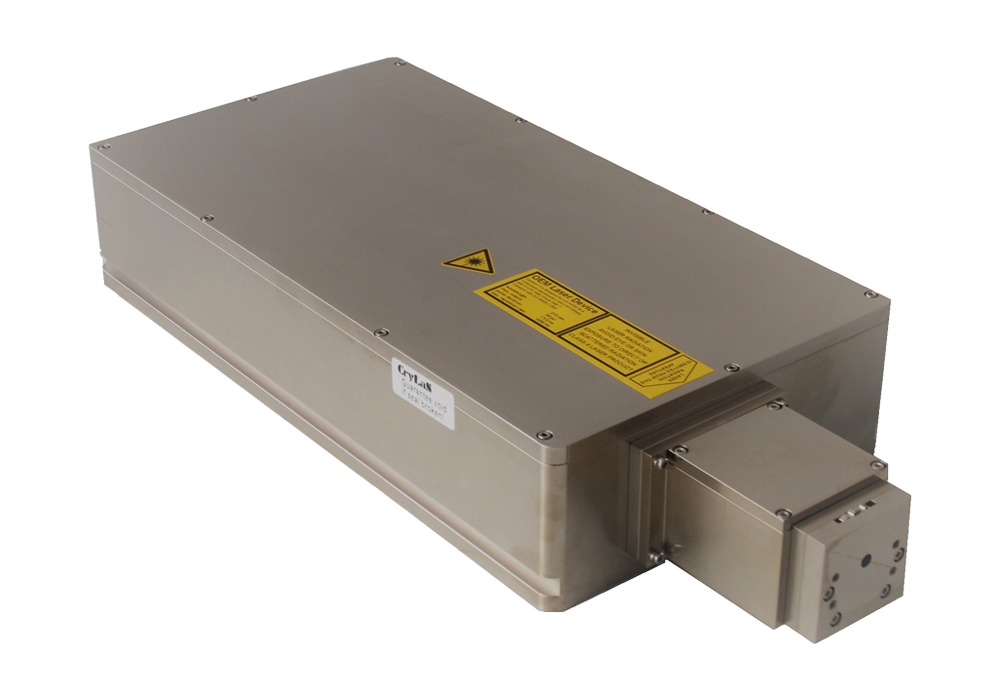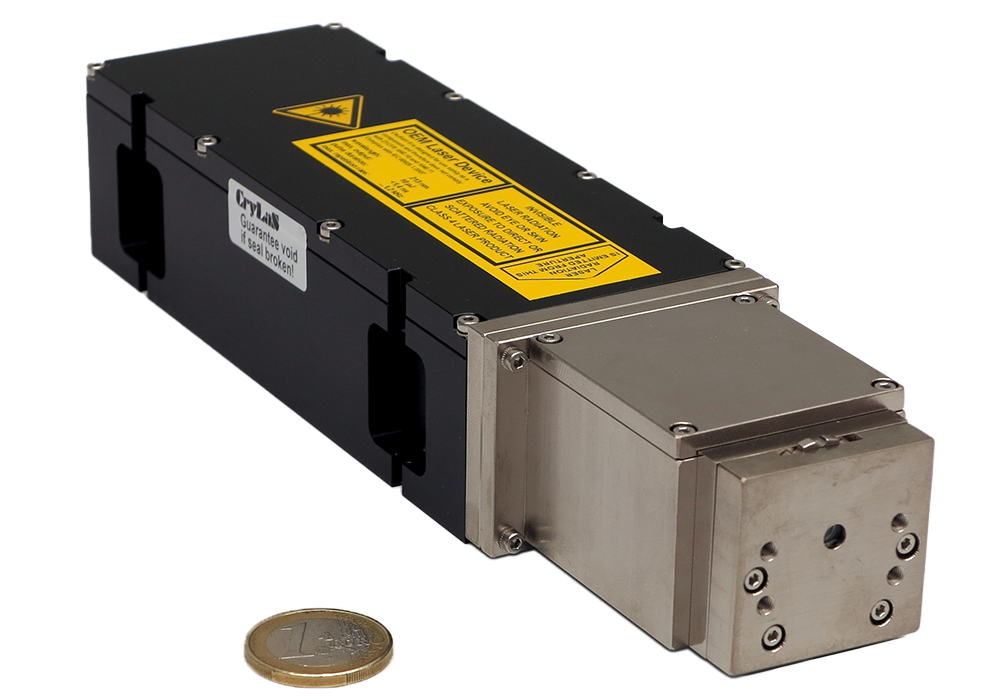Technical data:
| Wavelength | 213 nm |
| Beam divergence (full angle) | < 1.5 mrad |
| Ellipticity | < 2:1 |
| Beam diameter | 450 ± 150 μm (at laser aperture) |
| Peak power | > 40 kW @ 20 Hz |
| Pulse energy | > 50 μJ @ 20 Hz |
| Pulse repetition rate | 1 – 30 Hz |
| Pulse width (FWHM) | ≤ 1.3 ns |
| Polarisation orientation and purity | > 100:1, horizontal |
| Long term pulse energy stability (6 Stunden) | < ± 5 % |
| Pulse-to-pulse stability | < 3 % rms |
| Optical output | Free beam |
| Laser class | 4 / IV |
| Residual Emission (266 nm, 532 nm, 1064 nm) | < 0.2 μJ |
| Electrical power consumption | < 90 W |
| Line voltage | 100 – 240 V AC (50-60 Hz) or 24 V DC |
RS 232, USB
| Warm-up time | < 10 min |
| Operating temperature | 18 – 38 °C |
| Laser head size | 283 x 65 x 45 mm |
- Manual shutter or electrical beam blocker
- External telescope (i.e. M=5)
- Stand-alone system (incl. key-switch, heat-sink and manual shutter; CDRH compliant)
High pulse energy and short pulse durations in the UV range
Based on CryLaS’ first development, the DSS1064 high-power laser, an entire product line has been designed. This emits at low frequencies from 20 Hz to about 100 Hz and, in terms of controller and laser head dimensions, is slightly larger than the Q lasers developed on top of it. However, the high-power lasers offer higher single pulse energies. Inside an air-sealed capsule are non-linear optics that produce multiples of the fundamental’s frequency of 1064 nm. Frequency doubling, tripling, quadrupling and quintupling eventually lead to a broadband spectrum of laser wavelengths that can be generated with this concept:
- 213 nm
- 266 nm
- 355 nm
- 532 nm
- 1064 nm
The almost complete absence of noise in this type of laser is also ensured by a closed control loop. The temperature inside the laser head, which is constantly changing due to external influences or heat generation in the resonator, is controlled using a photodiode signal. This monitors the intensity of the emitted laser radiation live. In this way, the laser is always operated at its optimum, which keeps the noise of the laser power low.
The 213 nm lasers of the high-power series are based on frequency doubling of the 1064 nm fundamental wavelength by NLO crystals. The fundamental is generated by pumping a microchip with a laser diode (808 nm). The chip itself consists of a Nd:YAG resonator and a saturable absorber (Cr:YAG). The IR laser beam is passed through conversion crystals, converted and combined with other frequency multiples so that ultimately 213 nm can be emitted. This wavelength has a high photon energy of about 5.8 eV. This makes it ideal for fluorescence or photoluminescence analysis of semiconductors or other materials where high energies are required for excitation, ionization or sublimation. Mass spectroscopy on aerosols is also a possibility.
Due to passive Q-switching, much more compact designs are possible than for lasers with active Q-switching. This, and the unnecessary electronic components associated with it, eliminates a large part of the acquisition cost. In addition to the air-sealed capsule for the conversion crystals, the laser housing itself is also air-sealed. This helps to ensure the long life of these lasers, as the inner workings are not contaminated by dust or the like. All relevant information about the laser system is stored in an EEPROM and can also be accessed and set remotely, so that optimizations and any repairs can be carried out remotely. Depending on the application, there are some practical options available. Among other things, we offer attenuators for laser energy, wavelength switchers or beam expanders. The lasers are suitable for continuous operation in scientific and industrial environments.
The most important aspects at a glance:
- Max. repetition rate: 30 Hz
- High output energy in a compact housing: 50 µJ
- Average power 1 mW
- Peak power of 40 kW







